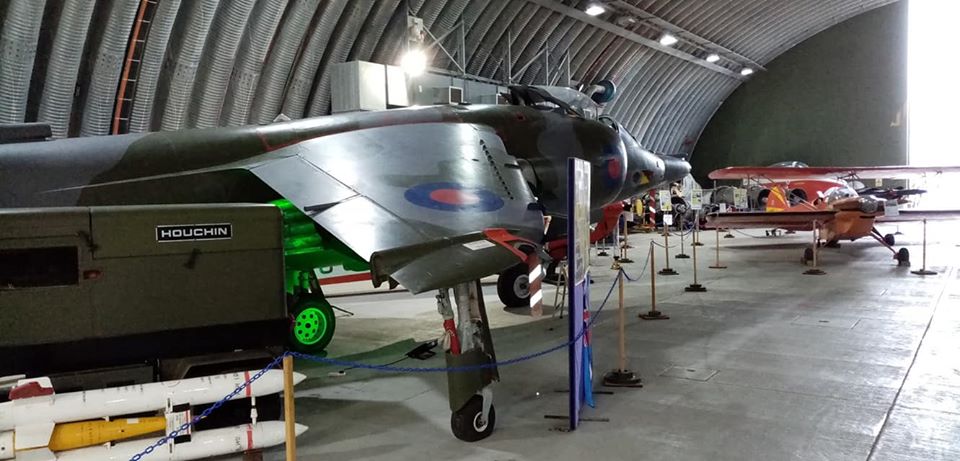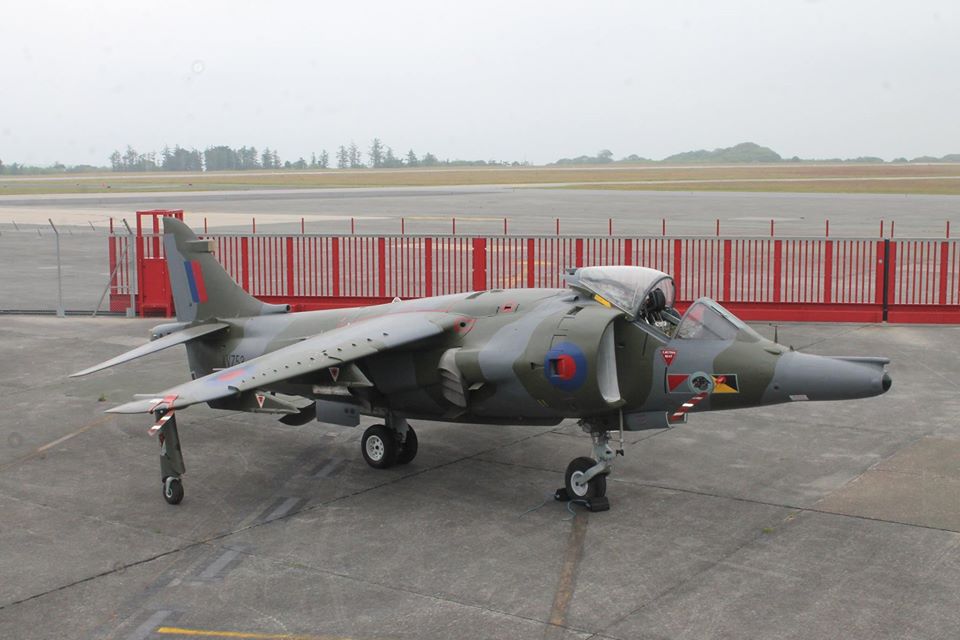BAE Harrier GR3 – XV753



Specification
Technical Specification
- Crew: One
Dimensions
- Length: 46 ft 10 in (14.27 m)
- Wingspan: 25 ft 3 in (7.70 m)
- Empty weight: 13,535 lb (6,140 kg)
- Max. takeoff weight: 25,200 lb (11,430 kg)
Performance
- Powerplant: 1 × Rolls-Royce Pegasus 103 turbofan - 21,500 lbf (95.6 kN) thrust
- Maximum speed: 730 mph (635 knots, 1,176 km/h) at sea level
- Combat radius: 230 mi (200 nmi, 370 km
- Service ceiling: 51,200 ft (15,600 m)
Description
Often more simply known as the Hawker Harrier or “Jump Jet”, it remains the only successful Vertical/Short Take-Off and Landing (V/STOL) jet fighter in the history of military aviation and it will only lose that title when the new V/STOL version of the Lockheed-Martin F-35 II finally enters service with the RAF, Royal Navy and United Stated Marine Corps.
The Harrier was conceived as a ground attack and reconnaissance aircraft which, because it doesn’t need a runway, could operate from simple bases near to the front lines. That meant it could take-off and arrive were it was needed very quickly and had the ability to return to re-fuel and re-arm with the minimum loss of time.
The concept of the Harrier proved so successful that the design was developed in the United States by McDonnel Douglas as the AV-8A for use by the US Marines Corps, where updated versions continue in service to the present day. Another development was the radar-equipped Sea Harrier, optimised for use from aircraft carriers with a new primary role of Fleet Defence.
